Pushing Boundaries with Green Energy Innovations
As we stand on the brink of an energy revolution, the importance of green energy innovations cannot be overstated. With climate change looming large and fossil fuel resources dwindling, the shift towards sustainable energy sources is not just a trend; it's a necessity. This article explores the latest advancements in green energy technologies, their impact on sustainability, and how these innovations are reshaping the future of energy consumption and environmental conservation.
Imagine a world where clean energy powers our homes, vehicles, and industries—where the air is fresher, and the planet is healthier. This vision is becoming increasingly achievable thanks to groundbreaking innovations in renewable energy. From solar panels that capture sunlight more efficiently to wind turbines that harness the power of the breeze, the advancements in technology are nothing short of revolutionary.
In recent years, we have witnessed a surge in research and development aimed at enhancing the efficiency and accessibility of renewable energy sources. These innovations are not only making green energy more viable but are also contributing significantly to reducing our carbon footprint. For instance, solar energy has seen a remarkable transformation with the introduction of perovskite solar cells, which promise higher efficiency at lower costs compared to traditional silicon cells.
Moreover, the integration of smart technologies into energy systems is paving the way for more efficient energy management. Smart grids, powered by the Internet of Things (IoT), allow for real-time monitoring and optimization of energy use, ensuring that we make the most out of the renewable energy generated. This interconnectedness not only enhances efficiency but also empowers consumers to take control of their energy consumption, promoting a culture of sustainability.
As we delve deeper into this article, we will explore various sectors of green energy innovations, including solar and wind energy breakthroughs, advancements in energy storage technologies, and the role of policies in shaping the green energy landscape. Each section will reveal how these innovations are not just ideas on paper but are actively transforming our world into a more sustainable place.
So, buckle up as we embark on this journey through the exhilarating world of green energy innovations, where every advancement brings us one step closer to a cleaner, greener future!
- What are green energy innovations? Green energy innovations refer to new technologies and methods that enhance the efficiency and accessibility of renewable energy sources.
- How do solar energy advancements impact sustainability? Advancements in solar energy technologies increase efficiency, reduce costs, and make solar power a more viable option for widespread use, thus promoting sustainability.
- What role do policies play in green energy? Government policies provide incentives and regulations that encourage the adoption of renewable energy technologies, shaping the overall landscape of green energy.
- Why is energy storage important? Energy storage technologies are crucial for maximizing the efficiency of renewable energy systems by ensuring a steady supply of energy even when production is low.

Emerging Technologies in Solar Energy
Solar energy is not just a buzzword anymore; it's a revolution that is reshaping how we think about power generation. With the continuous evolution of technology, we are witnessing remarkable advancements that enhance the efficiency and accessibility of solar energy. Imagine harnessing the power of the sun in ways we never thought possible—this is no longer a dream but a reality. The newest innovations are paving the way for solar energy to become a mainstream power source, challenging traditional energy paradigms.
One of the most exciting developments in solar technology is the rise of perovskite solar cells. These cells are made from a unique crystalline structure that allows them to absorb sunlight more efficiently than conventional silicon-based cells. What makes perovskite cells particularly appealing is their potential for lower production costs and easier manufacturing processes. As a result, they could significantly reduce the price of solar panels, making solar energy accessible to a broader audience.
Furthermore, advancements in bifacial solar panels are also taking center stage. Unlike traditional panels that only capture sunlight from one side, bifacial panels can harness light from both sides, increasing energy output by up to 30%. This means that even in less-than-ideal conditions, such as cloudy days or areas with reflected light, these panels can still perform remarkably well.
Additionally, the integration of solar tracking systems is revolutionizing solar farms. These systems allow solar panels to follow the sun's trajectory throughout the day, maximizing exposure to sunlight and enhancing energy production. By utilizing solar trackers, energy outputs can improve by 25% to 35%, which is a game-changer for large-scale solar installations.
To further illustrate the impact of these technologies, let's take a look at a comparative table of traditional solar panels versus emerging technologies:
| Technology | Efficiency | Cost | Durability |
|---|---|---|---|
| Traditional Silicon Panels | 15-20% | Moderate | 25 years |
| Perovskite Solar Cells | 20-25% | Low | 10-15 years |
| Bifacial Solar Panels | 20-30% | High | 25 years |
| Solar Tracking Systems | 25-35% improvement | High | 25 years |
As we look ahead, the potential for solar energy is immense. With ongoing research and development, we can expect even more groundbreaking technologies that will make solar power a cornerstone of our energy landscape. The question is, how soon will these innovations become widely adopted? With the right investments and policies in place, we could see a substantial shift towards sustainable energy solutions within the next decade.
- What are perovskite solar cells? Perovskite solar cells are a new type of solar technology that uses a unique crystalline structure to capture sunlight more efficiently and at a lower cost than traditional silicon cells.
- How do bifacial solar panels work? Bifacial solar panels capture sunlight from both sides, increasing energy output by utilizing reflected light and improving efficiency in various lighting conditions.
- What are solar tracking systems? Solar tracking systems are devices that adjust the angle of solar panels throughout the day to maximize sunlight exposure, significantly boosting energy production.

Wind Energy Breakthroughs
Wind energy is not just a buzzword anymore; it’s a dynamic force reshaping our energy landscape. With the world increasingly leaning towards sustainable solutions, innovations in wind energy are paving the way for a cleaner, greener future. From advanced turbine designs to the expansion of offshore wind farms, these breakthroughs are making wind power more efficient and cost-effective than ever before.
One of the most exciting developments in this field is the improvement in turbine technology. Modern turbines are not only larger but also smarter, equipped with sensors and software that optimize performance based on real-time wind conditions. This means they can generate more electricity while minimizing wear and tear. For example, the latest models can adjust their blade angles to capture wind energy more effectively, leading to a significant increase in energy production.
Moreover, the shift towards offshore wind farms is a game changer. These installations, often located miles away from shore, take advantage of stronger and more consistent winds. The scale of these projects is impressive; some offshore wind farms can power hundreds of thousands of homes. However, they do come with their own set of challenges, including higher installation and maintenance costs. Despite this, the benefits far outweigh the downsides, as they contribute significantly to reducing carbon emissions.
Another fascinating trend is the rise of vertical axis wind turbines (VAWTs). Unlike traditional horizontal turbines, VAWTs have a unique design that allows them to capture wind from any direction. This feature makes them particularly suitable for urban environments where wind patterns can be unpredictable. Imagine having a sleek, modern turbine on your rooftop that not only generates energy but also enhances your building's aesthetic appeal!
The vertical design of these turbines offers several advantages:
- Performance in Turbulent Winds: VAWTs excel in turbulent wind conditions, making them ideal for cityscapes.
- Lower Noise Levels: They typically generate less noise than their horizontal counterparts, which is a big plus for residential areas.
- Ease of Maintenance: Their design allows for easier access to components, simplifying maintenance procedures.
Integrating VAWTs into urban infrastructure is not just a dream; it's becoming a reality. Cities around the world are recognizing the potential of these turbines to contribute to their energy needs. For instance, some municipalities are incorporating them into public buildings, parks, and even streetlights. This not only promotes sustainable energy solutions but also raises awareness about renewable energy among residents.
Offshore wind farms represent a significant leap in harnessing wind energy. These installations can be massive, with some farms spanning several square miles and housing hundreds of turbines. The benefits of offshore wind power are numerous:
- Higher Energy Output: Offshore winds are generally stronger and more consistent than onshore winds, leading to increased energy production.
- Reduced Land Use: By placing these farms in the ocean, we can preserve valuable land resources for agriculture and conservation.
- Job Creation: The development and maintenance of offshore wind farms create numerous job opportunities in engineering, construction, and operations.
However, the development of offshore wind farms is not without challenges. Issues such as environmental impact, high installation costs, and the logistics of maintenance in marine environments need to be addressed. But with advancements in technology and engineering, these challenges are being tackled head-on, making offshore wind a cornerstone of our renewable energy future.
Q: What are the main benefits of wind energy?
A: Wind energy is renewable, reduces greenhouse gas emissions, and can create jobs in the renewable energy sector.
Q: How do offshore wind farms differ from onshore farms?
A: Offshore wind farms typically harness stronger and more consistent winds, leading to higher energy output, but they also face unique challenges such as installation and maintenance costs.
Q: What is the future of wind energy technology?
A: The future looks promising with ongoing innovations in turbine design, energy storage solutions, and integration with smart grid technology.
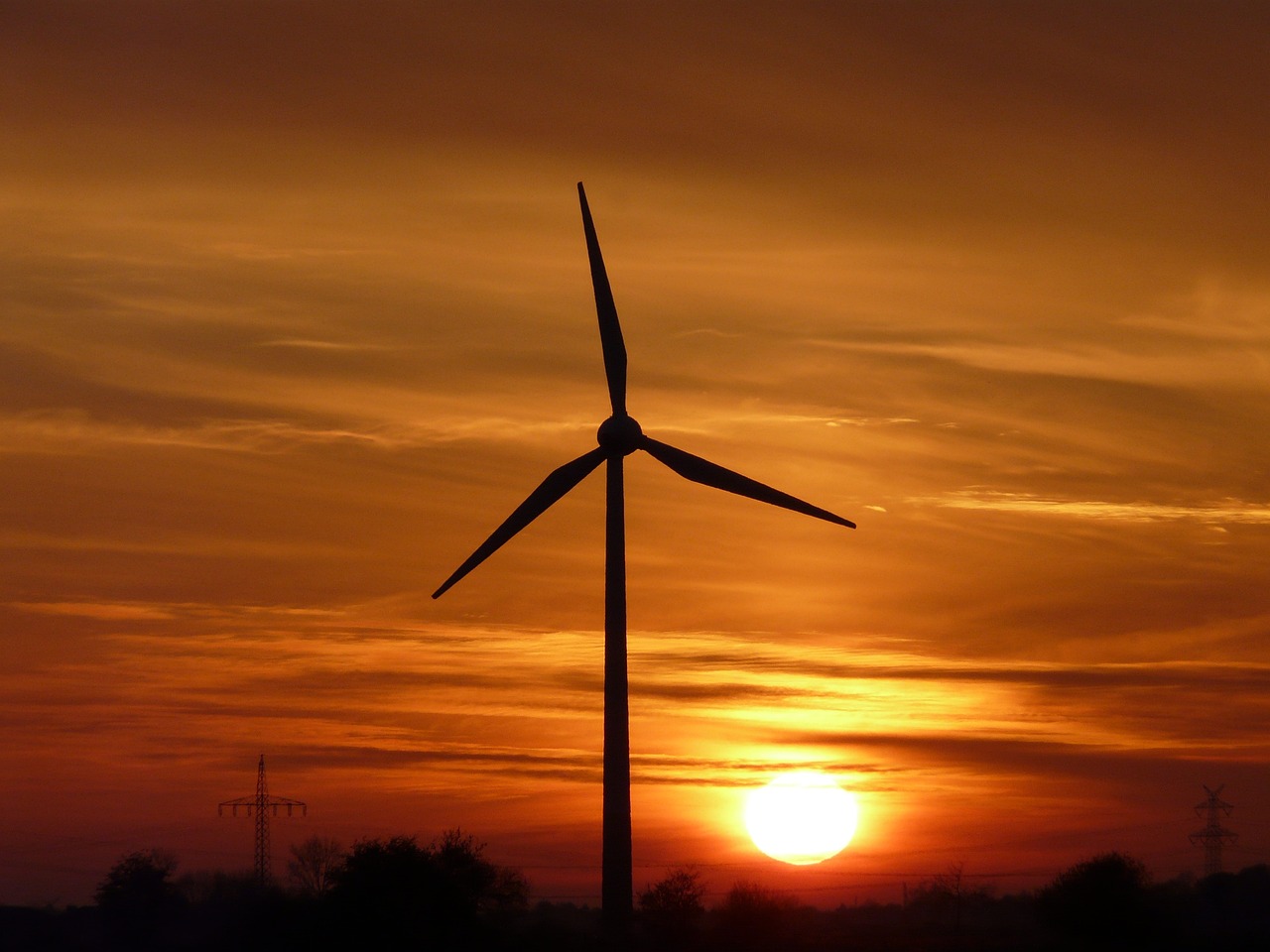
Vertical Axis Wind Turbines
Vertical axis wind turbines (VAWTs) are making waves in the renewable energy sector, and for good reason! Unlike their traditional horizontal counterparts, VAWTs have a unique design that allows them to harness wind energy more effectively in a variety of environments. Imagine a wind turbine that can catch the breeze from any direction without needing to adjust its position—this is precisely what VAWTs offer. Their innovative structure not only enhances efficiency but also makes them particularly suitable for urban settings where space is limited and wind patterns can be unpredictable.
One of the most striking features of vertical axis wind turbines is their ability to perform well in turbulent wind conditions. This characteristic is especially beneficial in cities, where buildings and other structures can create swirling air currents. For instance, in a densely populated area, traditional turbines might struggle to generate power due to inconsistent wind flow, but VAWTs can thrive in these challenging environments. This adaptability opens up new possibilities for urban energy generation, making it easier for cities to transition to sustainable energy sources.
Moreover, VAWTs come with a host of advantages that make them an appealing option for both residential and commercial applications. Here are a few key benefits:
- Safety: With no large blades sweeping through the air, VAWTs are generally safer for birds and other wildlife.
- Low Noise Levels: They tend to operate more quietly than horizontal turbines, making them ideal for residential areas.
- Ease of Maintenance: The design of VAWTs allows for easier access to components, which simplifies maintenance and reduces operational costs.
In addition to these advantages, integrating VAWTs into urban infrastructure can significantly enhance energy generation. Cities are increasingly adopting these technologies to promote sustainable energy solutions. For example, rooftops and public spaces can be equipped with VAWTs, turning them into mini power stations that contribute to the local grid. This not only helps reduce reliance on fossil fuels but also fosters a sense of community involvement in the energy transition.
As we look to the future, the potential for vertical axis wind turbines is immense. With ongoing research and development, we can expect to see even more efficient designs and applications that will further propel the adoption of wind energy in urban areas. The combination of their unique advantages and the growing demand for sustainable energy solutions makes VAWTs a key player in the renewable energy landscape.
1. What are the main differences between vertical and horizontal axis wind turbines?
The primary difference lies in their design and orientation. Horizontal axis wind turbines (HAWTs) have blades that rotate around a horizontal axis, while vertical axis wind turbines (VAWTs) rotate around a vertical axis. VAWTs can capture wind from any direction, making them more versatile in turbulent environments.
2. Are vertical axis wind turbines more suitable for urban areas?
Yes, VAWTs are particularly well-suited for urban settings due to their ability to perform well in turbulent wind conditions and their compact design, which allows for installation in limited spaces.
3. How do vertical axis wind turbines impact wildlife?
VAWTs are generally considered safer for wildlife compared to HAWTs, as they have lower rotational speeds and do not have large blades that can pose a threat to birds and bats.
4. What maintenance do vertical axis wind turbines require?
VAWTs typically require less maintenance than HAWTs due to their design, which allows for easier access to components. Regular inspections and maintenance of bearings and other moving parts are essential for optimal performance.
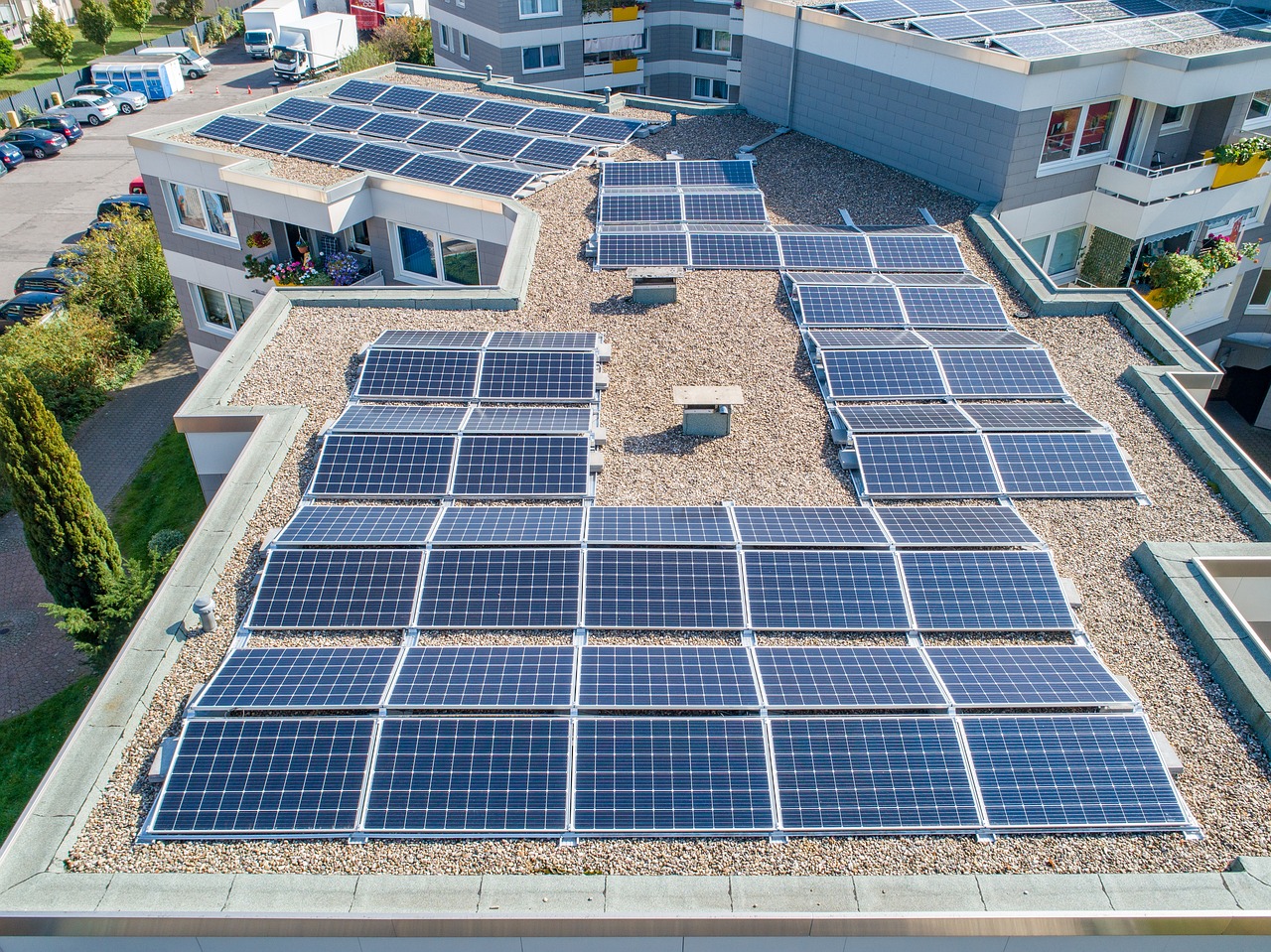
Advantages of Vertical Design
Vertical axis wind turbines (VAWTs) are not just a novel concept; they represent a significant shift in how we harness wind energy, especially in urban environments. One of the primary advantages of the vertical design is its ability to capture wind from any direction. Unlike traditional horizontal axis wind turbines (HAWTs), which require specific wind alignment, VAWTs can efficiently operate in turbulent wind conditions that are often found in cities. This flexibility makes them ideal for locations where wind patterns are unpredictable.
Another compelling benefit is the reduced noise pollution associated with vertical turbines. Many urban dwellers are concerned about noise created by wind energy systems. VAWTs typically operate more quietly than their horizontal counterparts, allowing for energy generation without disrupting the peace of residential areas. This characteristic is particularly appealing in densely populated cities where maintaining a serene environment is essential.
Moreover, the lower height of vertical turbines means they can be installed in areas where traditional turbines would be prohibited due to height restrictions. This opens up a plethora of locations for energy generation, from rooftops of commercial buildings to small parks and community spaces. The compact nature of VAWTs allows for more versatile applications, enabling cities to integrate renewable energy solutions seamlessly into their existing infrastructure.
To further illustrate the advantages of vertical design, consider the following comparison between VAWTs and HAWTs:
| Feature | Vertical Axis Wind Turbines (VAWTs) | Horizontal Axis Wind Turbines (HAWTs) |
|---|---|---|
| Wind Direction | Operates in any wind direction | Requires specific wind alignment |
| Noise Level | Generally quieter | Can be noisy |
| Height Restrictions | Lower height, can fit in urban settings | Higher, often subject to regulations |
| Maintenance | Easier access for maintenance | Higher maintenance costs due to height |
In summary, the advantages of vertical axis wind turbines extend beyond just their innovative design. They offer a practical solution for urban energy generation, addressing common concerns such as noise and height restrictions while maximizing efficiency. As cities continue to grow and the demand for sustainable energy solutions increases, VAWTs are poised to play a crucial role in the transition to greener energy practices.
- What are vertical axis wind turbines?
Vertical axis wind turbines are a type of wind turbine that has a vertical rotor shaft, allowing them to capture wind from any direction.
- How do VAWTs differ from traditional wind turbines?
VAWTs can operate in turbulent wind conditions and are generally quieter, making them more suitable for urban environments compared to traditional horizontal axis wind turbines.
- Are VAWTs more efficient than HAWTs?
While efficiency can vary based on design and location, VAWTs are often more effective in urban settings due to their ability to capture wind from multiple directions.
- What are the maintenance requirements for VAWTs?
VAWTs typically have lower maintenance costs because they are easier to access compared to taller HAWTs.

Integration with Urban Infrastructure
The integration of vertical axis wind turbines (VAWTs) into urban infrastructure represents a groundbreaking shift in how cities can harness renewable energy. Imagine walking down a bustling street, surrounded by skyscrapers, and spotting these sleek, modern turbines gracefully spinning atop rooftops or nestled between buildings. This isn’t just a futuristic dream; it’s becoming a reality in many cities around the globe. By incorporating VAWTs into urban landscapes, cities can capitalize on the natural wind currents that swirl around buildings, providing a sustainable energy source without taking up valuable ground space.
One of the significant advantages of integrating VAWTs into urban settings is their ability to operate efficiently in turbulent wind conditions. Unlike traditional horizontal axis turbines, which require a steady wind direction to function optimally, VAWTs can harness wind from any direction. This flexibility makes them particularly suitable for densely populated areas where wind patterns can be unpredictable. Furthermore, their lower height compared to horizontal turbines means they can be installed in a variety of locations, from residential neighborhoods to commercial districts, without raising concerns about aesthetics or safety.
As cities strive to meet sustainability goals, the adoption of VAWTs offers a dual benefit: they generate clean energy while also contributing to the urban environment. For instance, integrating these turbines into existing structures can help reduce the overall carbon footprint of a city. In addition, they can be used in conjunction with other renewable energy sources, such as solar panels, to create a more resilient and diversified energy system. The following table summarizes the key benefits of integrating VAWTs into urban infrastructure:
| Benefit | Description |
|---|---|
| Space Efficiency | VAWTs can be installed on rooftops and small spaces, maximizing energy production without occupying ground space. |
| Noise Reduction | VAWTs operate more quietly than traditional turbines, making them suitable for residential areas. |
| Lower Maintenance | With fewer moving parts, VAWTs generally require less maintenance, reducing operational costs. |
| Community Engagement | Involving local communities in the installation process can foster a sense of ownership and promote green initiatives. |
Moreover, cities are increasingly recognizing the potential of these turbines as part of their energy strategy. For instance, urban planners are exploring ways to incorporate VAWTs into new building designs, ensuring that sustainability is a core component of urban development. Additionally, local governments are offering incentives for businesses and homeowners to install these systems, making renewable energy more accessible to everyone. This collaborative approach not only enhances the energy resilience of cities but also encourages community participation in the transition to a greener future.
In conclusion, the integration of vertical axis wind turbines into urban infrastructure is a promising avenue for cities looking to embrace renewable energy. By leveraging the unique benefits of VAWTs, urban areas can significantly reduce their carbon emissions, promote sustainability, and pave the way for a cleaner, greener future. As technology continues to advance and awareness grows, we can expect to see more cities adopting these innovative solutions, transforming urban landscapes into vibrant hubs of renewable energy production.
- What are vertical axis wind turbines?
Vertical axis wind turbines (VAWTs) are a type of wind turbine that has a vertical rotor shaft, allowing them to capture wind from any direction and operate efficiently in turbulent conditions.
- How do VAWTs benefit urban areas?
VAWTs are space-efficient, quieter, and require less maintenance than traditional turbines, making them ideal for integration into urban infrastructure.
- What incentives are available for installing VAWTs?
Many local governments offer tax credits, grants, and other incentives to encourage the adoption of renewable energy technologies, including VAWTs.
- Can VAWTs work alongside other renewable energy sources?
Yes, VAWTs can be effectively combined with other renewable energy systems, such as solar panels, to create a more resilient and diversified energy supply.
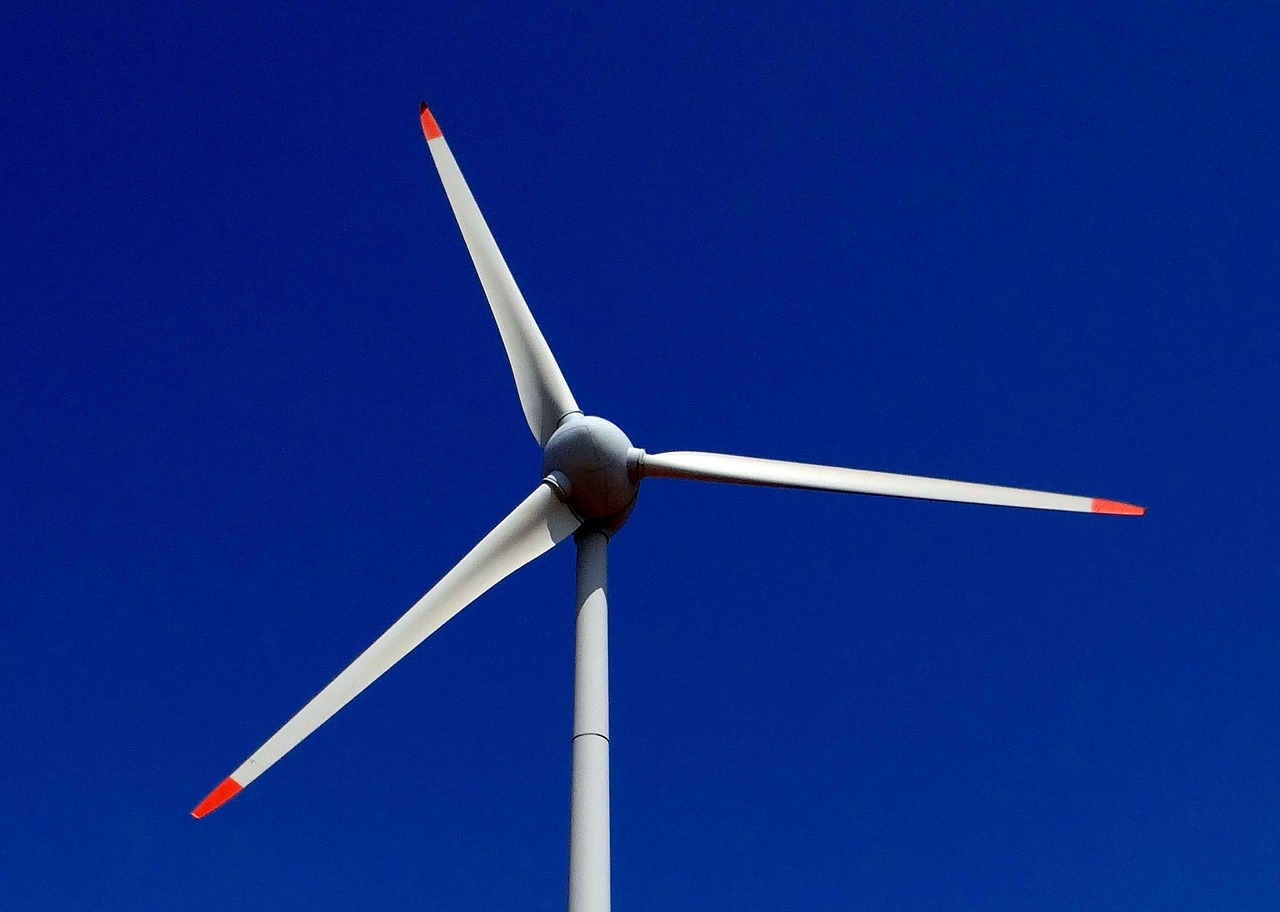
Offshore Wind Farms
Offshore wind farms are rapidly emerging as a game-changer in the renewable energy sector, harnessing the power of strong, consistent winds over the ocean to generate electricity. These farms consist of numerous wind turbines located in bodies of water, typically far from shore where the wind is stronger and more reliable. By tapping into this vast energy source, offshore wind farms are poised to play a critical role in our transition to a sustainable energy future.
One of the most significant advantages of offshore wind farms is their scale. Unlike traditional onshore wind farms, which may be limited by land availability and proximity to urban areas, offshore installations can be much larger. This allows for the installation of more turbines, leading to increased energy output. For instance, a single offshore wind farm can generate enough electricity to power thousands of homes. According to recent studies, the potential energy generation from offshore wind is estimated to be in the range of 4,000 to 7,000 terawatt-hours annually, which is more than twice the total energy consumption of the United States.
However, the development of offshore wind farms does come with its challenges. The construction and maintenance of these facilities can be complex and costly due to harsh marine conditions. Factors such as strong waves, corrosion from saltwater, and logistical challenges of transporting materials and personnel to offshore sites must be carefully managed. Despite these hurdles, advances in technology and engineering are making offshore wind farms more feasible and economically viable.
To give you a clearer picture, here’s a table highlighting some key benefits and challenges associated with offshore wind farms:
| Benefits | Challenges |
|---|---|
| Higher energy output due to stronger winds | High initial investment and construction costs |
| Less land use conflicts compared to onshore farms | Logistical challenges in maintenance and operation |
| Potential for large-scale energy generation | Environmental impact assessments required |
Moreover, the integration of offshore wind farms into the existing energy grid is crucial. This involves not only connecting the generated electricity to the grid but also ensuring that the energy produced is reliable and can be distributed effectively. Innovations in energy storage and smart grid technology are essential to manage the intermittent nature of wind energy, ensuring that it can be utilized even when the wind isn't blowing.
As we look to the future, offshore wind farms are set to become a cornerstone of global renewable energy strategies. With countries around the world investing in this technology, we can expect to see a significant increase in offshore wind capacity. This shift not only supports energy independence but also plays a vital role in reducing greenhouse gas emissions and combating climate change.
- What are offshore wind farms? Offshore wind farms are installations of wind turbines located in bodies of water, designed to capture wind energy and convert it into electricity.
- How do offshore wind farms benefit the environment? They produce clean energy, reducing reliance on fossil fuels and lowering greenhouse gas emissions.
- What challenges do offshore wind farms face? They encounter high construction costs, logistical challenges, and environmental impact considerations.
- How much energy can one offshore wind farm generate? A single offshore wind farm can generate enough electricity to power thousands of homes, depending on its size and the number of turbines installed.
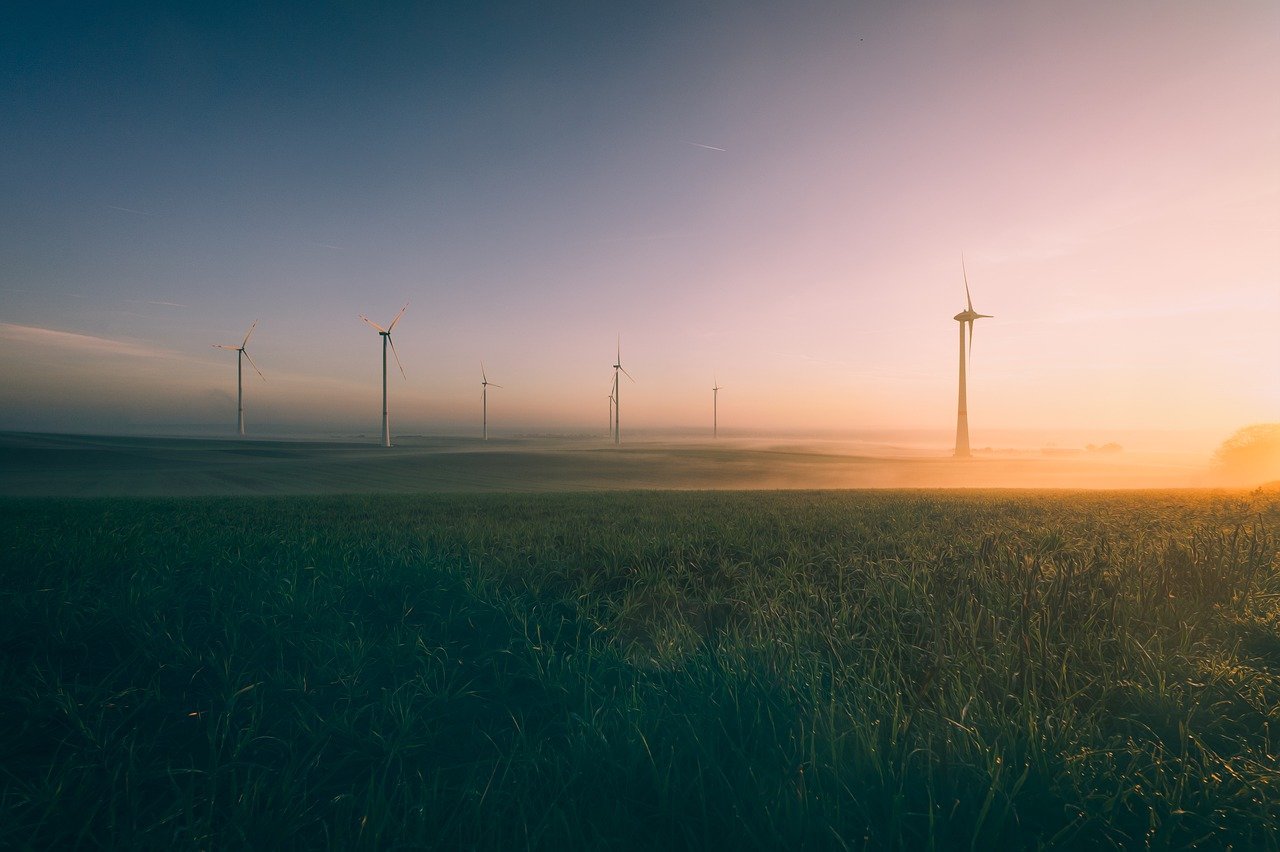
Advancements in Energy Storage
Energy storage technologies are at the forefront of the renewable energy revolution. As we strive for a sustainable future, these innovations play a crucial role in maximizing the efficiency of renewable energy systems. The ability to store energy generated from sources like solar and wind means we can use it when demand peaks, rather than when it’s produced. This not only stabilizes the energy grid but also enhances the reliability of renewable energy as a primary power source.
One of the most exciting advancements in energy storage is the development of solid-state batteries. Unlike traditional lithium-ion batteries, which use liquid electrolytes, solid-state batteries employ solid electrolytes. This innovation offers several compelling benefits:
- Higher Energy Density: Solid-state batteries can store more energy in a smaller volume, making them ideal for electric vehicles and portable electronics.
- Improved Safety: With no liquid electrolytes, the risk of leaks and fires is significantly reduced, enhancing overall safety.
- Longer Lifespan: These batteries tend to have a longer cycle life, meaning they can be charged and discharged more times before their performance degrades.
Moreover, pumped hydro storage remains a reliable and widely used method for energy storage, particularly for large-scale applications. This technology works by using excess energy to pump water uphill to a reservoir. When energy is needed, the water is released to flow back down, turning turbines to generate electricity. Recent advancements in this field focus on improving the efficiency and environmental footprint of pumped hydro systems. For instance, innovations in turbine design and materials are being explored to minimize ecological disruption and enhance energy conversion efficiency.
In addition to these technologies, the integration of smart grids is revolutionizing energy management. Smart grids utilize advanced communication technologies to monitor and manage energy flows in real-time. This allows for better integration of renewable energy sources and enhances the overall efficiency of energy distribution. With the ability to respond dynamically to changes in energy supply and demand, smart grids can optimize the use of stored energy, making it possible to reduce waste and lower costs.
In summary, advancements in energy storage are vital for harnessing the full potential of renewable energy. As we continue to innovate and improve these technologies, we pave the way for a more sustainable and resilient energy future. The ongoing research and development in this field promise to deliver even more efficient, safe, and reliable energy storage solutions that will support our transition to a greener planet.
Q1: What are solid-state batteries?
A1: Solid-state batteries are a type of battery that uses solid electrolytes instead of liquid ones, offering higher energy density and improved safety.
Q2: How does pumped hydro storage work?
A2: Pumped hydro storage involves using excess energy to pump water to a higher elevation and then releasing it to generate electricity when needed.
Q3: What role do smart grids play in energy storage?
A3: Smart grids enhance energy management by allowing real-time monitoring and optimization of energy flows, which helps integrate renewable sources and improve storage efficiency.

Solid-State Batteries
In the quest for more efficient and safer energy storage solutions, have emerged as a game-changer. Unlike traditional lithium-ion batteries, which use liquid electrolytes, solid-state batteries utilize a solid electrolyte. This fundamental shift not only enhances safety by reducing the risk of leaks and fires but also opens up a world of possibilities for energy density and longevity.
Imagine a battery that lasts longer, charges faster, and is less prone to overheating. Solid-state batteries promise just that! With their higher energy density, they can store more energy in a smaller space, which is crucial for applications ranging from electric vehicles to portable electronics. This means that electric cars could travel significantly further on a single charge, making them more appealing to consumers who are hesitant about range anxiety.
Moreover, the lifespan of solid-state batteries is anticipated to be much longer than their liquid counterparts. Traditional batteries typically degrade over time, losing their ability to hold a charge. In contrast, solid-state batteries can withstand many more charge cycles, resulting in a longer overall lifespan. This not only benefits consumers but also contributes to sustainability by reducing the frequency of battery replacements.
However, it's essential to acknowledge that solid-state technology is still in its developmental stages. While the benefits are substantial, there are challenges to overcome, particularly in manufacturing processes and costs. Currently, producing solid-state batteries at scale remains a hurdle, but researchers and companies are investing heavily in finding solutions. As advancements continue, we can expect to see solid-state batteries become more mainstream, revolutionizing the way we think about energy storage.
To illustrate the potential advantages of solid-state batteries over traditional lithium-ion batteries, consider the following comparison:
| Feature | Solid-State Batteries | Lithium-Ion Batteries |
|---|---|---|
| Energy Density | Higher | Lower |
| Safety | More secure (no liquid electrolyte) | Risk of leaks and fires |
| Lifespan | Longer | Shorter |
| Cost | Higher initial cost | Lower initial cost |
In summary, solid-state batteries are poised to redefine energy storage with their numerous advantages. As we continue to innovate and overcome existing challenges, these batteries could become the cornerstone of a sustainable energy future, powering everything from our smartphones to electric vehicles with unparalleled efficiency and safety.
- What are solid-state batteries? Solid-state batteries are energy storage devices that use a solid electrolyte instead of a liquid one, offering improved safety and energy density.
- How do solid-state batteries compare to lithium-ion batteries? Solid-state batteries generally provide higher energy density, longer lifespan, and enhanced safety compared to traditional lithium-ion batteries.
- Are solid-state batteries commercially available? While solid-state batteries are still in development, some prototypes and limited commercial applications are emerging, with expectations for broader availability in the near future.
- What are the main challenges facing solid-state battery technology? Key challenges include high manufacturing costs and the need for advancements in production processes to enable large-scale deployment.

Pumped Hydro Storage
Pumped hydro storage (PHS) is one of the oldest and most reliable methods for storing energy. It operates on a simple yet effective principle: water is pumped from a lower reservoir to an upper reservoir during periods of low energy demand, typically when electricity prices are cheaper. Then, during peak demand times, the stored water is released back down through turbines, generating electricity as it flows back to the lower reservoir. This two-way process not only helps in balancing the energy supply and demand but also plays a crucial role in stabilizing the grid.
One of the most significant advantages of pumped hydro storage is its ability to provide large-scale energy storage. Unlike batteries, which have a limited capacity, PHS can store vast amounts of energy, making it ideal for managing the intermittent nature of renewable energy sources such as solar and wind. For instance, a single pumped hydro facility can store enough energy to power thousands of homes for several hours, showcasing its potential in energy management.
However, while pumped hydro storage is incredibly effective, it does come with its own set of challenges. The construction of PHS facilities requires significant investment and suitable geographical locations, typically involving large water bodies and elevation differences. Additionally, environmental concerns, such as the impact on local ecosystems and water usage, must be carefully considered. Despite these challenges, ongoing innovations and improvements in technology are helping to mitigate some of the environmental impacts, making PHS a more sustainable option.
To illustrate the potential of pumped hydro storage, consider the following table that compares it to other energy storage technologies:
| Storage Technology | Energy Capacity | Efficiency | Environmental Impact | Cost |
|---|---|---|---|---|
| Pumped Hydro Storage | High | 70-90% | Moderate | Low per MWh |
| Lithium-Ion Batteries | Low to Moderate | 80-90% | High (mining impacts) | High per MWh |
| Compressed Air Energy Storage | Moderate | 60-70% | Low to Moderate | Moderate per MWh |
As we look to the future, the role of pumped hydro storage will likely expand, especially as we transition to a more renewable energy-driven grid. With advancements in technology and a growing emphasis on sustainable practices, pumped hydro storage could become a cornerstone of our energy landscape, ensuring that we can harness the power of nature while maintaining a reliable and efficient energy supply.
- What is pumped hydro storage?
Pumped hydro storage is a method of storing energy by moving water between two reservoirs at different elevations to generate electricity when needed.
- How efficient is pumped hydro storage?
Pumped hydro storage systems typically operate at an efficiency rate of 70-90%, depending on the technology and design.
- What are the environmental impacts of pumped hydro storage?
While it has a moderate environmental impact compared to other storage methods, concerns include ecosystem disruption and water usage.
- Can pumped hydro storage support renewable energy?
Yes, it is particularly effective in managing the variability of renewable energy sources like wind and solar, providing a reliable backup when generation is low.

Smart Grids and Energy Management
In today's rapidly evolving energy landscape, smart grids have emerged as a game-changer in how we distribute, manage, and consume energy. Imagine a network that not only delivers electricity but also communicates with devices in real-time, optimizing energy use and enhancing efficiency. Smart grids utilize advanced technologies to create a more resilient and responsive energy system, ensuring that energy is available when and where it is needed most. This transformative approach is paving the way for a sustainable future, where renewable energy sources can be seamlessly integrated into our daily lives.
The backbone of smart grids lies in their ability to collect and analyze data from various sources, including power plants, homes, and businesses. With the help of Internet of Things (IoT) devices, energy management becomes a dynamic process. For instance, smart meters allow consumers to track their energy consumption in real-time, enabling them to make informed decisions about their energy use. This not only helps reduce waste but also promotes energy conservation, which is crucial in the fight against climate change.
Moreover, smart grids enhance the reliability of energy supply. By utilizing predictive analytics, utility companies can anticipate demand fluctuations and adjust supply accordingly. This proactive approach minimizes the risk of blackouts and ensures a steady flow of electricity. Additionally, smart grids can automatically reroute power during outages, significantly reducing recovery times and improving overall system resilience.
One of the most exciting aspects of smart grids is their potential for decentralized energy production. Homeowners can generate their own energy through solar panels and feed excess power back into the grid, creating a two-way energy flow. This not only empowers consumers but also contributes to a more sustainable energy ecosystem. As more individuals and businesses adopt renewable energy solutions, the grid becomes increasingly decentralized, fostering energy independence and resilience.
However, the transition to smart grids is not without its challenges. Issues such as cybersecurity, interoperability, and regulatory frameworks need to be addressed to fully realize the potential of smart energy management. As we move forward, collaboration between governments, utilities, and technology providers will be essential in overcoming these hurdles and ensuring that smart grids can deliver on their promise of a cleaner, more efficient energy future.
- What is a smart grid? A smart grid is an advanced electrical grid that uses digital technology to monitor and manage the transport of electricity from all generation sources to meet the varying electricity demands of end users.
- How do smart grids improve energy management? Smart grids improve energy management by providing real-time data on energy consumption, allowing for better demand response, and facilitating the integration of renewable energy sources.
- What role do IoT devices play in smart grids? IoT devices play a crucial role in smart grids by enabling real-time monitoring and communication between energy producers and consumers, enhancing overall efficiency and reliability.
- Are there any challenges associated with smart grids? Yes, challenges include cybersecurity risks, the need for interoperability between different technologies, and the development of appropriate regulatory frameworks.
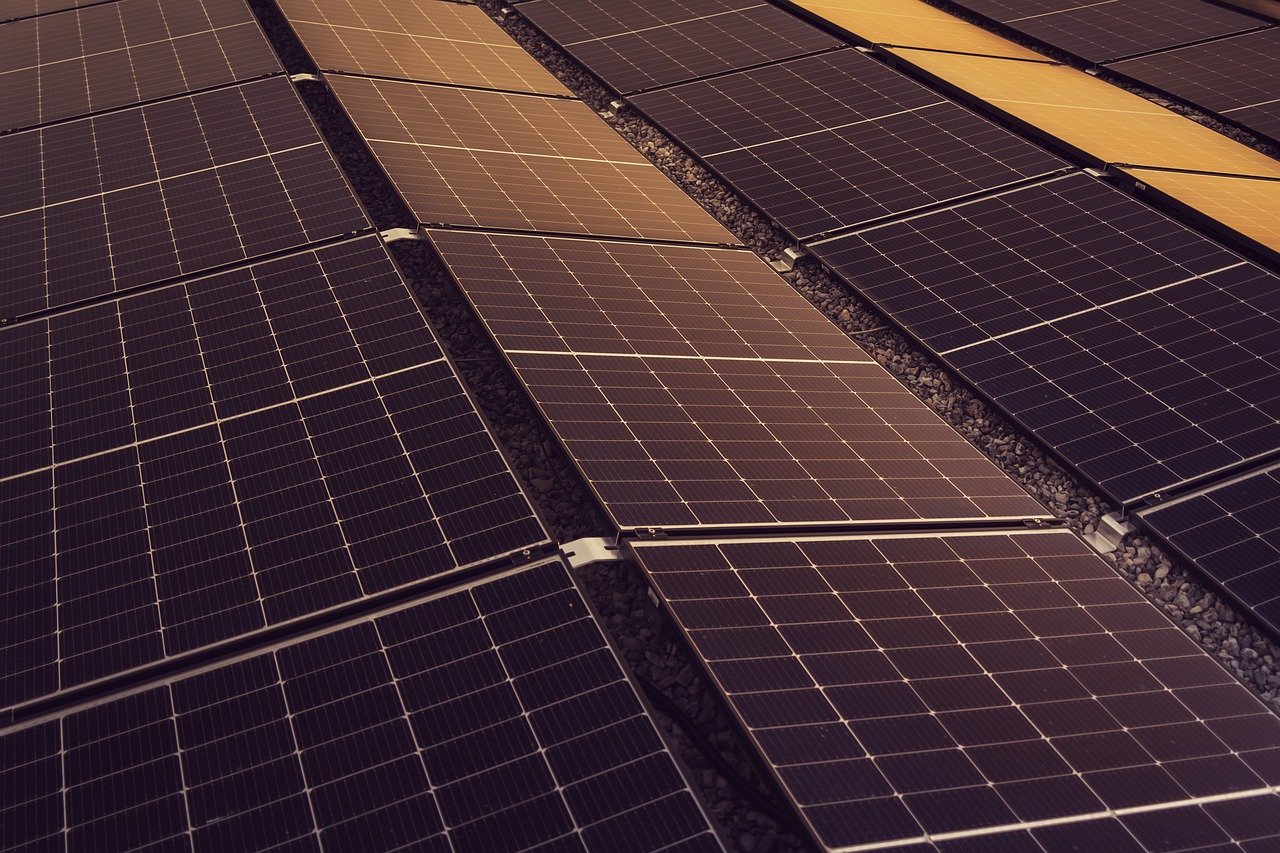
Role of IoT in Energy Management
The Internet of Things (IoT) is not just a buzzword; it's a game-changer in the realm of energy management. Imagine a world where your energy consumption is not only monitored in real-time but also optimized automatically to save costs and reduce waste. That's the power of IoT in action! By connecting various devices and systems, IoT creates a seamless flow of information that enables smarter energy usage.
One of the most exciting aspects of IoT is its ability to provide detailed insights into energy consumption patterns. With smart meters and connected appliances, users can track their energy usage from anywhere, at any time. This level of transparency allows homeowners and businesses alike to identify areas where they can cut back on unnecessary energy consumption. For instance, a simple notification from a smart thermostat can remind you to adjust the temperature when you're not home, leading to significant savings on your energy bill.
Moreover, IoT devices can communicate with each other to create a more efficient energy ecosystem. For example, when solar panels generate excess energy, smart home systems can redirect that energy to charge electric vehicles or power other appliances. This not only maximizes the use of renewable energy but also minimizes reliance on the grid. The potential for this interconnectedness is enormous, as it can lead to a more sustainable and resilient energy infrastructure.
But how exactly does IoT enhance energy management? Here are some key roles it plays:
- Real-time Monitoring: IoT devices provide instantaneous data on energy consumption, allowing for quick adjustments and informed decision-making.
- Predictive Analytics: By analyzing historical data, IoT systems can predict future energy needs, helping to avoid peak demand charges and optimize energy procurement.
- Automated Control: Smart devices can automatically adjust their operation based on real-time energy prices, ensuring that energy is used when it’s most affordable.
- Enhanced Grid Management: IoT facilitates better communication between energy producers and consumers, improving grid reliability and reducing outages.
As we look to the future, the role of IoT in energy management will only grow. With advancements in artificial intelligence and machine learning, these systems will become even more sophisticated, enabling greater efficiency and sustainability. Imagine a smart city where traffic lights adjust based on real-time energy availability, or buildings that automatically optimize energy use based on occupancy levels. The possibilities are endless!
In conclusion, the integration of IoT into energy management systems represents a crucial step towards a more sustainable future. By harnessing the power of connectivity, we can not only reduce our energy bills but also contribute to a healthier planet. As consumers become more aware of their energy consumption, the demand for IoT solutions will only continue to rise, paving the way for innovative technologies that can truly revolutionize how we manage energy.
- What is IoT? The Internet of Things (IoT) refers to the network of interconnected devices that communicate and share data with each other.
- How does IoT help in energy management? IoT enables real-time monitoring, predictive analytics, and automated control of energy consumption, leading to improved efficiency and reduced costs.
- Can IoT devices save me money on my energy bill? Yes! By optimizing energy usage and providing insights into consumption patterns, IoT devices can help you identify savings opportunities.
- Are IoT systems secure? While IoT systems can be vulnerable to cyber threats, manufacturers are continuously improving security measures to protect user data and privacy.

Decentralized Energy Production
Decentralized energy production is revolutionizing the way we think about energy consumption and generation. Imagine a world where your energy comes from right outside your window, rather than a distant power plant. This shift towards local energy generation empowers individuals and communities to take charge of their energy needs. With advancements in technology, anyone can now harness renewable sources like solar panels or wind turbines to produce their own electricity.
The benefits of decentralized energy production are numerous and significant. For starters, it promotes energy independence, allowing consumers to reduce their reliance on traditional energy providers. This not only leads to potential cost savings but also enhances resilience against power outages and fluctuations in energy prices. Additionally, by generating energy locally, we can significantly reduce transmission losses that occur when electricity travels long distances through power lines.
Another exciting aspect of decentralized energy production is its contribution to sustainability. By utilizing renewable resources, individuals can lower their carbon footprint and actively participate in the fight against climate change. Consider the following points:
- Environmental Impact: Local energy production minimizes the environmental degradation associated with large-scale energy generation.
- Community Engagement: Communities can collaborate on energy projects, fostering a sense of ownership and responsibility.
- Economic Growth: Local energy initiatives can create jobs and stimulate local economies.
However, the transition to decentralized energy production is not without its challenges. Regulatory hurdles, initial investment costs, and the need for supportive infrastructure can pose significant barriers. Yet, as technology continues to evolve, these obstacles are gradually being overcome. For instance, smart meters and energy management systems are making it easier for consumers to monitor and optimize their energy use, further encouraging the shift towards decentralized systems.
In summary, decentralized energy production is more than just a trend; it represents a fundamental shift in how we approach energy generation and consumption. As we move towards a more sustainable future, embracing this model will be crucial for achieving energy independence and fostering environmental stewardship.
Q1: What is decentralized energy production?
A1: Decentralized energy production refers to generating energy at or near the point of use, rather than at a central power plant. This can include solar panels, wind turbines, and other renewable energy systems.
Q2: What are the benefits of decentralized energy production?
A2: Benefits include energy independence, reduced transmission losses, lower carbon emissions, community engagement, and potential cost savings.
Q3: What challenges does decentralized energy production face?
A3: Challenges include regulatory hurdles, initial investment costs, and the need for supportive infrastructure to facilitate local energy generation.
Q4: How can I get started with decentralized energy production?
A4: You can start by researching local incentives for renewable energy installations, consulting with energy experts, and considering options like solar panels or small wind turbines for your property.
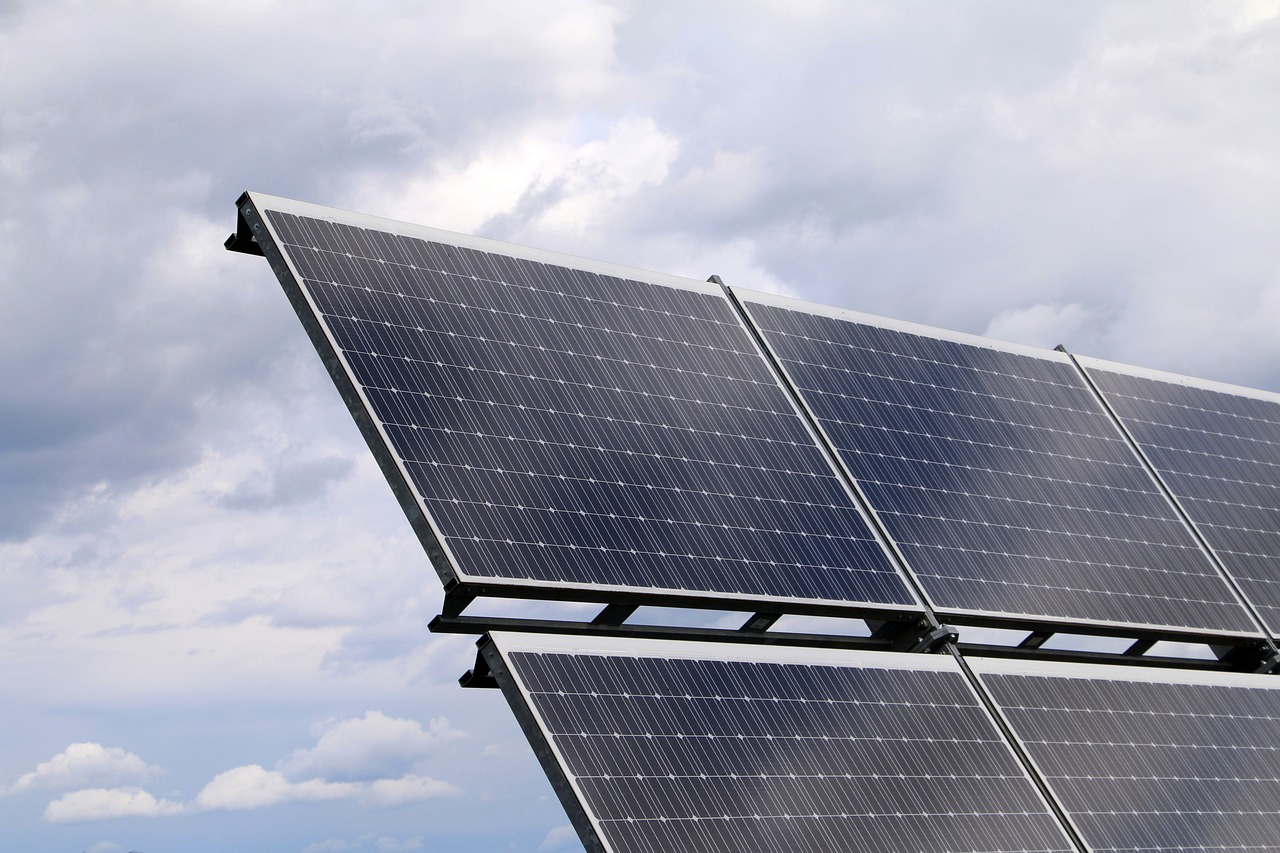
Policy and Regulation Impacting Green Energy
When it comes to the world of green energy, government policies serve as the backbone that supports and shapes the entire landscape. Without the right regulations and incentives in place, the journey towards a sustainable energy future could be much slower and more challenging. This section dives deep into the current regulations and incentives that are fostering the growth of renewable energy technologies, ensuring that they not only thrive but also become integral parts of our daily lives.
One of the most significant factors influencing green energy adoption is the array of incentives provided by governments worldwide. These incentives can take many forms, including:
- Tax credits: These are essentially discounts on taxes owed, which can significantly lower the cost of switching to renewable energy sources.
- Grants: Financial assistance that does not need to be repaid, helping individuals and companies invest in green technologies.
- Subsidies: Direct financial support that reduces the cost of renewable energy production, making it more competitive with fossil fuels.
Moreover, the regulatory framework is essential for providing a stable environment for investment in green energy. Policies that promote renewable portfolio standards require utilities to obtain a certain percentage of their energy from renewable sources. This not only encourages the development of new renewable energy projects but also helps to create a reliable market for green energy.
In addition to local policies, global policy trends are also making waves in the renewable energy sector. International agreements, such as the Paris Agreement, set ambitious targets for reducing greenhouse gas emissions. Countries are now racing to meet these targets, which has led to a surge in investments in renewable energy technologies. This global perspective not only fosters cooperation among nations but also encourages competition, driving innovation and efficiency in green energy solutions.
To better understand the impact of these policies, let's take a look at a table summarizing some key incentives and their effects on renewable energy adoption:
| Incentive Type | Description | Impact on Adoption |
|---|---|---|
| Tax Credits | Reduces tax liability for renewable energy investments | Encourages homeowners and businesses to invest |
| Grants | Financial assistance for renewable energy projects | Facilitates initial investment, especially for startups |
| Subsidies | Direct financial support for renewable energy production | Makes renewable energy more competitive with fossil fuels |
As we look to the future, it's clear that the role of policy and regulation in shaping green energy cannot be overstated. The interplay between government initiatives and the advancements in renewable technologies will ultimately determine how quickly we can transition to a sustainable energy future. The more robust the policies, the more likely we are to see widespread adoption of green energy solutions, leading to a cleaner, healthier planet for generations to come.
Q1: What are the main types of incentives for renewable energy?
A1: The main types of incentives include tax credits, grants, and subsidies, which help reduce the financial burden of transitioning to renewable energy sources.
Q2: How do government policies affect the adoption of green energy?
A2: Government policies create a favorable environment for investment, set renewable energy targets, and provide financial incentives, all of which encourage the adoption of green technologies.
Q3: What is the impact of global agreements like the Paris Agreement on renewable energy?
A3: Global agreements set ambitious emission reduction targets, prompting countries to invest heavily in renewable energy solutions to meet these goals.
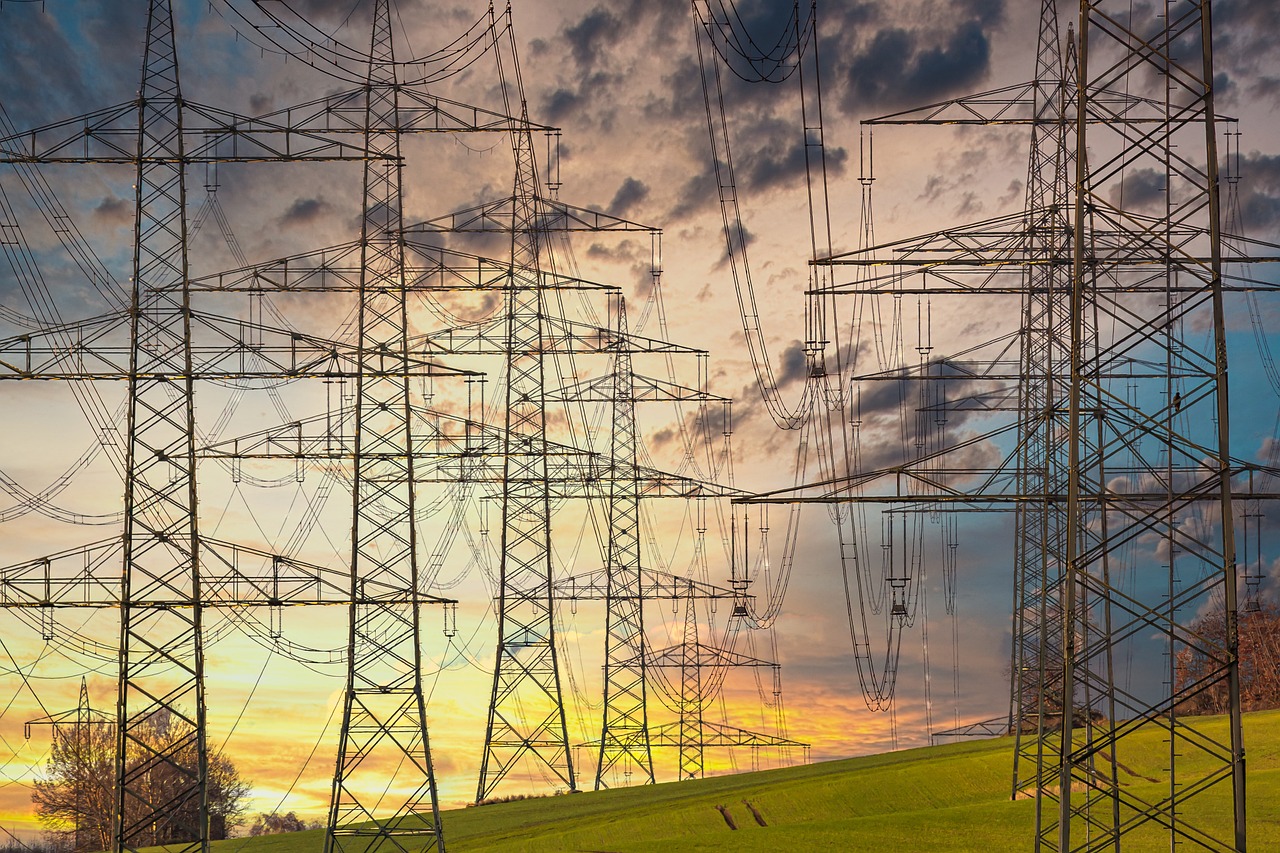
Incentives for Renewable Energy Adoption
In the quest for a sustainable future, government incentives play a crucial role in encouraging the adoption of renewable energy technologies. These incentives not only help reduce the initial costs associated with renewable energy installations but also foster innovation and growth within the sector. Imagine a world where the sun powers your home, and the wind fuels your commute—this vision is becoming increasingly attainable thanks to supportive policies and financial assistance.
One of the most common forms of incentives is the tax credit. For instance, many governments offer tax credits for solar panel installations, which can significantly reduce the overall cost for homeowners and businesses alike. A typical tax credit might cover a percentage of the installation cost, making it more affordable for the average consumer. This not only boosts consumer interest but also stimulates the market, leading to more jobs and technological advancements.
In addition to tax credits, grants are another effective incentive. These are funds provided by governments or organizations that do not need to be repaid, often aimed at specific renewable energy projects. For example, a municipality might offer grants to encourage the installation of energy-efficient systems in public buildings, thereby showcasing a commitment to sustainability while reducing long-term operational costs.
Furthermore, feed-in tariffs are a popular incentive in many regions. This policy ensures that individuals who generate their own renewable energy, such as solar or wind, can sell excess power back to the grid at a guaranteed rate. This not only provides a steady income stream for homeowners but also encourages more people to invest in renewable energy technologies, knowing they can recoup their investment over time.
To illustrate the impact of these incentives, consider the following table that outlines some common incentives available in various regions:
| Incentive Type | Description | Example Region |
|---|---|---|
| Tax Credit | Percentage reduction on installation costs for renewable energy systems. | USA |
| Grants | Funds provided for specific renewable energy projects. | EU Countries |
| Feed-in Tariffs | Guaranteed payment for excess energy sold back to the grid. | Germany |
These incentives are not just beneficial for individual consumers; they also contribute to broader environmental goals. By making renewable energy more accessible and affordable, governments are effectively reducing reliance on fossil fuels, decreasing greenhouse gas emissions, and promoting a cleaner, healthier planet.
In conclusion, the adoption of renewable energy is significantly influenced by the incentives offered by governments. As these incentives continue to evolve, they will play an essential role in shaping the future of energy consumption and environmental conservation. The more we embrace these opportunities, the closer we get to a sustainable energy future.
- What are the main types of incentives for renewable energy? The main types include tax credits, grants, and feed-in tariffs.
- How do tax credits work? Tax credits reduce the amount of tax you owe, based on a percentage of your renewable energy installation costs.
- Can I sell excess energy back to the grid? Yes, many regions offer feed-in tariffs that allow you to sell excess energy generated from renewable sources back to the grid.
- Are there incentives for businesses to adopt renewable energy? Absolutely! Many incentives are available for businesses, including larger tax credits and grants for commercial projects.
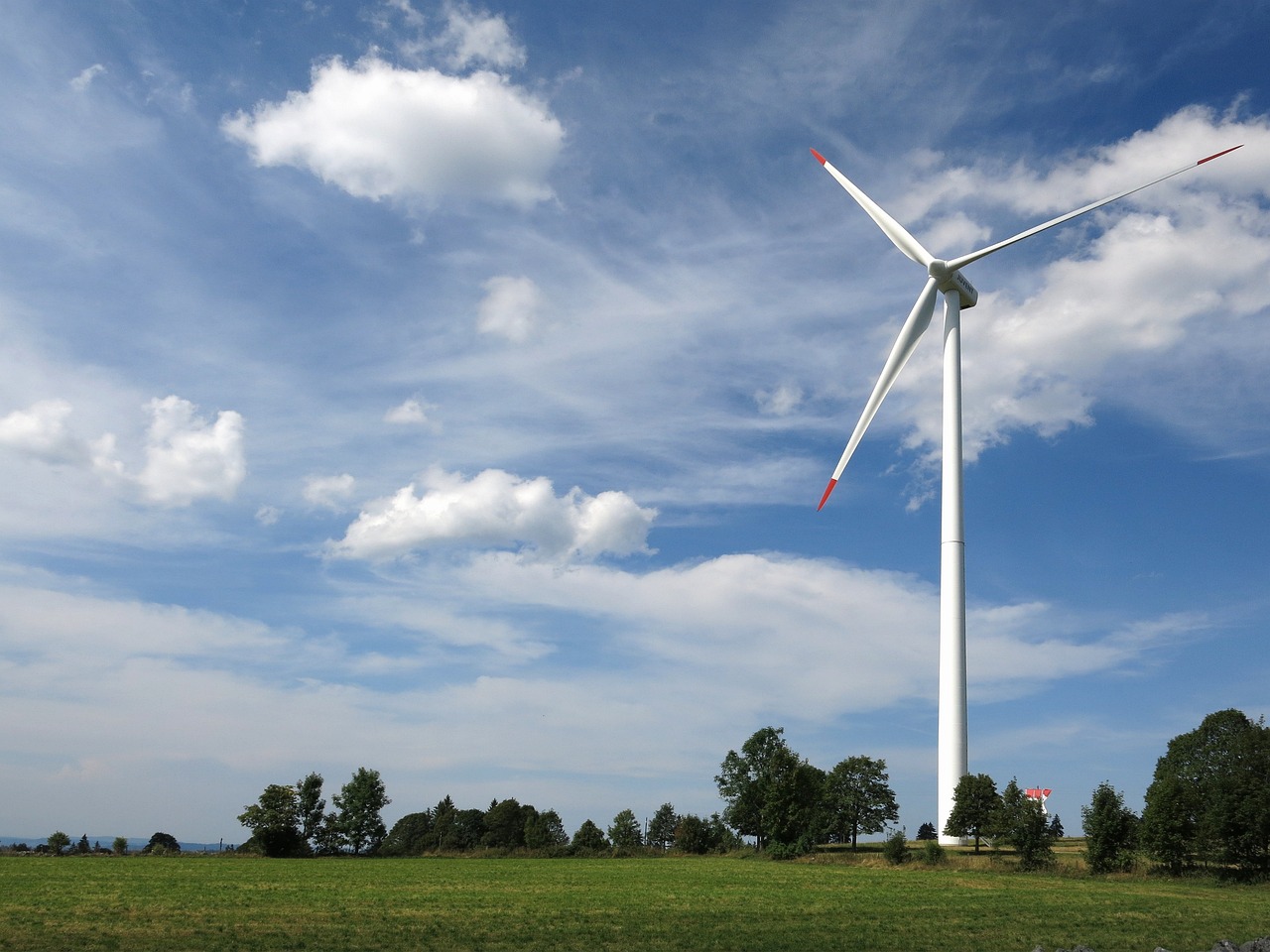
Global Policy Trends
In the ever-evolving landscape of green energy, play a crucial role in shaping the future of renewable energy adoption. Policymakers around the world are increasingly recognizing the urgency of addressing climate change, which has led to a surge in regulations and initiatives aimed at promoting sustainable energy solutions. These policies not only aim to reduce carbon emissions but also to stimulate economic growth and create jobs in the renewable energy sector.
One of the most significant trends is the commitment to international agreements such as the Paris Agreement, where countries have pledged to limit global warming to well below 2 degrees Celsius. This agreement has spurred nations to set ambitious targets for reducing greenhouse gas emissions. For example, countries like Germany and China have implemented policies that encourage the transition to renewable energy sources, including solar and wind power. These initiatives are often supported by financial incentives, such as subsidies and tax credits, which make it more appealing for businesses and consumers to invest in green technologies.
Moreover, many governments are establishing renewable energy portfolios that mandate a certain percentage of energy generation to come from renewable sources. This not only helps to diversify energy supply but also enhances energy security. In the United States, for example, various states have adopted Renewable Portfolio Standards (RPS) that require utilities to obtain a specific percentage of their energy from renewable resources. This approach has been instrumental in driving investments in solar and wind power across the country.
Another critical aspect of global policy trends is the increasing focus on energy efficiency. Governments are implementing regulations that require improvements in energy use across various sectors, including transportation, buildings, and manufacturing. These policies often include energy efficiency standards for appliances and vehicles, which help to reduce overall energy consumption and lower costs for consumers.
Furthermore, the rise of decentralized energy systems is gaining traction, allowing individuals and communities to generate their own energy through solar panels and wind turbines. This shift is supported by policies that promote net metering and feed-in tariffs, which enable homeowners to sell excess energy back to the grid. Such frameworks not only empower consumers but also foster a sense of community engagement in energy production.
As we look to the future, it’s clear that global policy trends will continue to evolve. Countries are increasingly collaborating on international platforms to share best practices and technologies that can accelerate the transition to a sustainable energy future. The integration of climate justice into energy policies is also becoming more prevalent, ensuring that vulnerable communities are not left behind in the green energy transition.
In conclusion, the landscape of green energy is being reshaped by robust global policy trends that prioritize sustainability, energy efficiency, and community involvement. These policies are not just about reducing emissions; they represent a comprehensive approach to building a resilient and equitable energy system for generations to come.
- What are global policy trends in green energy? Global policy trends refer to the regulations and initiatives adopted by countries to promote renewable energy and combat climate change.
- How do international agreements affect renewable energy? International agreements like the Paris Agreement set targets for emissions reductions, encouraging countries to adopt renewable energy sources.
- What role do incentives play in promoting green energy? Financial incentives, such as subsidies and tax credits, make it more attractive for businesses and consumers to invest in renewable technologies.
- What is decentralized energy production? Decentralized energy production allows individuals and communities to generate their own energy, often through renewable sources like solar and wind.

Future Trends in Green Energy
As we look ahead, the future of green energy is not just promising; it's bursting with potential. With technological advancements and a growing commitment to sustainability, we are on the brink of a revolution in how we produce and consume energy. One of the most exciting trends is the rise of hydrogen as a clean energy source. Hydrogen, often dubbed the fuel of the future, can be produced through various methods, including electrolysis powered by renewable energy. This means that we can harness the sun and wind to create hydrogen, which can then be used in everything from transportation to heating, offering a versatile solution to our energy needs.
Moreover, the integration of artificial intelligence (AI) into energy systems is set to transform the landscape. Imagine a world where AI optimizes energy distribution in real-time, predicts consumption patterns, and enhances the efficiency of renewable energy sources. AI algorithms can analyze vast amounts of data to forecast energy demand, manage load balancing, and even predict maintenance needs for renewable energy infrastructure. This not only improves the reliability of energy systems but also reduces waste and lowers costs.
In addition to these technological advancements, we can expect a shift towards more decentralized energy production. As consumers become more empowered, many are turning to solutions like rooftop solar panels and community wind projects. This trend promotes energy independence, allowing individuals and communities to generate their own power. With advancements in energy storage technologies, such as solid-state batteries and pumped hydro storage, the integration of decentralized energy systems becomes even more feasible. This shift could lead to a more resilient grid that is less susceptible to outages and disruptions.
Furthermore, the global policy landscape is evolving to support these innovations. Governments worldwide are recognizing the importance of transitioning to renewable energy sources and are implementing policies that incentivize investment in green technologies. For instance, tax credits, grants, and subsidies for renewable energy projects are becoming more common, encouraging businesses and individuals to adopt sustainable practices. This supportive environment will likely accelerate the adoption of innovative technologies and practices in the green energy sector.
As we explore these trends, it's essential to consider the broader implications for society and the environment. The transition to green energy is not just about technology; it's about creating a sustainable future for generations to come. By investing in renewable sources and embracing innovative solutions, we can significantly reduce our carbon footprint and combat climate change. The question is not if we will make this transition, but how quickly we can do so and how effectively we can integrate these new technologies into our daily lives.
- What is hydrogen energy? Hydrogen energy is produced by using hydrogen as a fuel source, which can be generated from various methods, including renewable energy sources.
- How does AI improve energy management? AI enhances energy management by analyzing data to optimize energy distribution, predict demand, and improve the efficiency of renewable energy systems.
- What are the benefits of decentralized energy production? Decentralized energy production allows consumers to generate their own energy, promoting energy independence and resilience while reducing reliance on centralized power grids.
- What policies support green energy adoption? Governments often provide tax credits, grants, and subsidies to encourage investment in renewable energy technologies and promote sustainable practices.
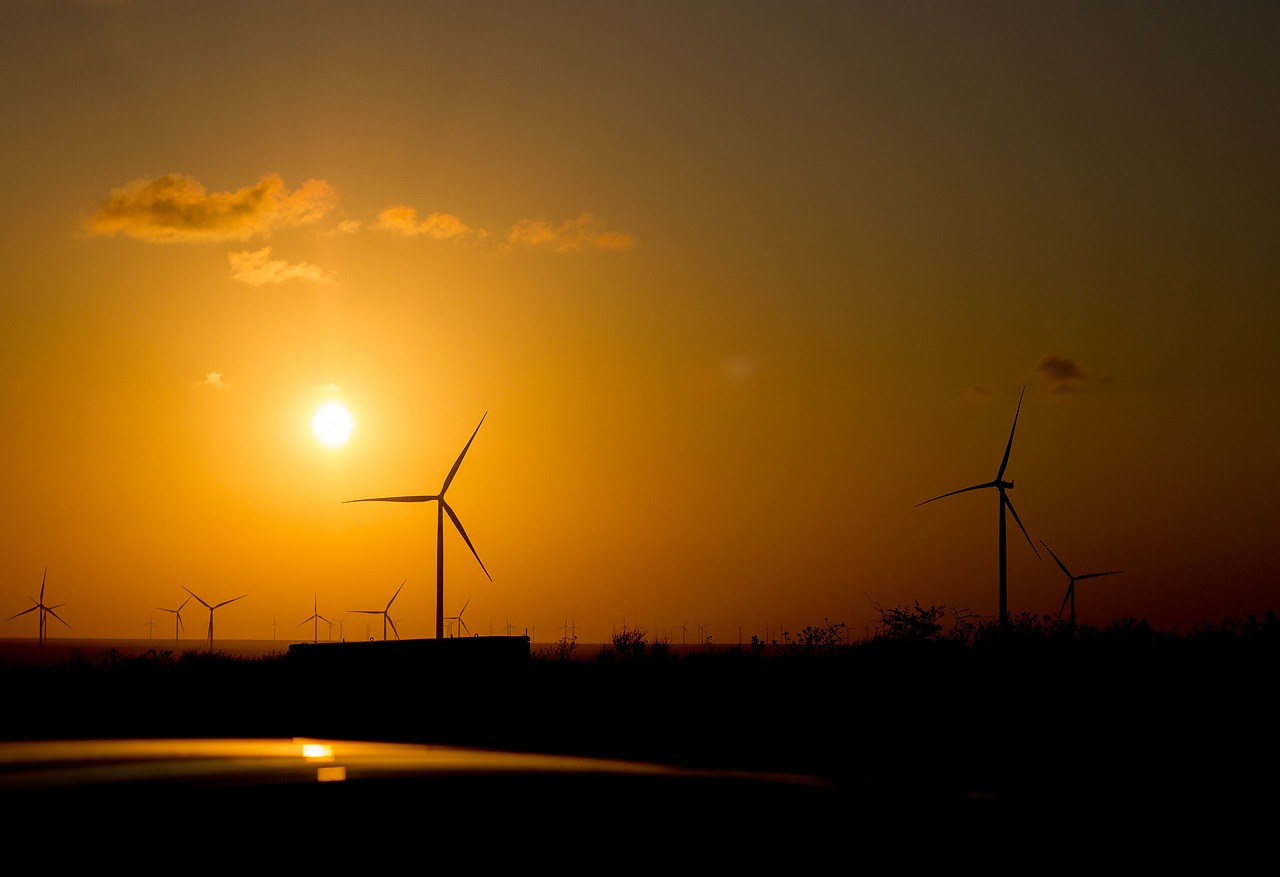
Hydrogen as a Clean Energy Source
Hydrogen is rapidly emerging as a game changer in the realm of clean energy. With its potential to serve as a versatile energy carrier, hydrogen can be produced from a variety of sources, including water, natural gas, and biomass. What makes hydrogen particularly appealing is its ability to produce zero emissions when used in fuel cells, making it a prime candidate for reducing our carbon footprint. Imagine a world where vehicles, homes, and industries run on hydrogen, emitting nothing but water vapor. Sounds like science fiction? It’s closer to reality than you think!
One of the most exciting aspects of hydrogen is its versatility. It can be used in various sectors, from transportation to heating and even electricity generation. For instance, hydrogen fuel cells can power electric vehicles (EVs), providing longer ranges and quicker refueling times compared to traditional battery-powered EVs. This could revolutionize transportation, making it cleaner and more efficient. Additionally, hydrogen can be blended with natural gas to reduce emissions in existing gas infrastructure, making it a practical transitional fuel.
However, the production of hydrogen itself is a critical factor in its sustainability. Currently, most hydrogen is produced through a process called steam methane reforming, which, while efficient, emits significant amounts of CO2. To truly harness hydrogen's potential as a clean energy source, we need to shift towards green hydrogen, which is produced through electrolysis using renewable energy sources like wind or solar. This method splits water into hydrogen and oxygen, resulting in a completely clean process.
Let’s take a closer look at the different methods of hydrogen production:
| Production Method | Description | Environmental Impact |
|---|---|---|
| Steam Methane Reforming | Converts natural gas into hydrogen and CO2. | High emissions; not sustainable. |
| Electrolysis | Uses electricity to split water into hydrogen and oxygen. | Zero emissions if powered by renewable energy. |
| Biomass Gasification | Converts organic materials into hydrogen. | Can be sustainable if managed properly. |
As we look towards the future, the integration of hydrogen into our energy systems could provide a crucial solution to some of the most pressing challenges we face. For example, hydrogen can help balance the grid by storing excess renewable energy and releasing it when demand is high. This makes it a valuable ally in the transition to a more sustainable energy landscape.
However, it’s essential to address the challenges associated with hydrogen, such as storage, distribution, and safety concerns. Hydrogen is the smallest and lightest molecule, which makes it difficult to store and transport. Innovations in storage technologies, such as metal hydrides and liquid organic hydrogen carriers, are being developed to overcome these challenges. As technology advances, the feasibility of hydrogen as a clean energy source will continue to improve.
In conclusion, hydrogen holds immense promise as a clean energy source that can help us achieve our sustainability goals. Its potential applications are vast, and with the right investments and innovations, we can pave the way for a cleaner, greener future. Are we ready to embrace this hydrogen revolution?
- What is hydrogen energy? Hydrogen energy refers to the energy produced from hydrogen, which can be used in fuel cells or burned to generate power.
- How is hydrogen produced? Hydrogen can be produced through various methods, including steam methane reforming, electrolysis, and biomass gasification.
- Is hydrogen a renewable energy source? Hydrogen itself is not a renewable energy source, but it can be produced sustainably using renewable energy through electrolysis.
- What are the benefits of hydrogen fuel cells? Hydrogen fuel cells offer zero emissions, quick refueling times, and longer ranges compared to traditional batteries.
- What challenges does hydrogen face? The main challenges include storage, distribution, and production methods that may not be environmentally friendly.

Integration of Artificial Intelligence
Artificial Intelligence (AI) is not just a buzzword; it’s revolutionizing how we approach energy management and sustainability. Imagine a world where energy systems are so smart that they can predict consumption patterns, optimize energy distribution, and even suggest energy-saving measures—all in real-time! This is not science fiction; it’s happening right now, and it’s all thanks to the integration of AI into green energy technologies.
At its core, AI harnesses vast amounts of data to make informed decisions. In the context of energy, this means analyzing everything from weather patterns to consumer behavior. For instance, AI algorithms can forecast energy demand based on historical data and real-time inputs. This ability to predict demand not only helps in managing resources more efficiently but also reduces waste, ultimately leading to a more sustainable energy landscape.
Moreover, AI enhances the efficiency of renewable energy sources. For example, in solar energy, AI can optimize the angle of solar panels based on the sun's position throughout the day, maximizing energy capture. In wind energy, AI systems can analyze wind patterns to determine the best locations for new turbines, ensuring that investments yield the highest returns. This level of precision is crucial as we move towards a future where every watt of energy counts.
Another exciting application of AI is in the realm of smart grids. These advanced systems use AI to monitor and manage electricity flows, allowing for real-time adjustments that improve reliability and efficiency. AI can also identify outages or inefficiencies almost instantaneously, enabling faster response times and minimizing downtime. This capability not only enhances the user experience but also contributes to overall grid resilience.
However, the integration of AI into energy systems is not without its challenges. Data privacy concerns, the need for robust cybersecurity measures, and the requirement for significant upfront investments in technology are all hurdles that need to be addressed. But the potential benefits far outweigh these challenges. As AI continues to evolve, its role in optimizing energy systems will only grow stronger, paving the way for a more sustainable and efficient future.
In summary, the integration of Artificial Intelligence into green energy technologies is a game-changer. It’s enabling us to harness renewable resources more effectively, manage energy consumption intelligently, and ultimately create a more sustainable world. As we look ahead, the synergy between AI and green energy will undoubtedly play a pivotal role in shaping our energy landscape.
- What is the role of AI in renewable energy? AI helps optimize energy production, predict demand, and manage resources more efficiently.
- How does AI improve energy efficiency? By analyzing data in real-time, AI can adjust systems to maximize output and minimize waste.
- What are the challenges of integrating AI into energy systems? Key challenges include data privacy, cybersecurity, and the need for significant investments in technology.
- Can AI help reduce energy costs? Yes, by optimizing energy usage and improving efficiency, AI can significantly lower energy costs for consumers and businesses alike.
Frequently Asked Questions
- What are the latest advancements in solar energy technologies?
The latest advancements in solar energy technologies include improved photovoltaic materials, bifacial solar panels, and solar tracking systems. These innovations enhance energy efficiency and increase the accessibility of solar power for both residential and commercial applications.
- How are wind energy technologies evolving?
Wind energy technologies are evolving through breakthroughs in turbine design, particularly with vertical axis wind turbines that perform better in urban settings. Offshore wind farms are also expanding, contributing significantly to renewable energy generation while facing challenges related to maintenance and scale.
- What are solid-state batteries and their benefits?
Solid-state batteries are a new type of energy storage technology that offers higher energy density and improved safety compared to traditional lithium-ion batteries. They promise longer life cycles and faster charging times, making them a game-changer for renewable energy systems.
- How do smart grids improve energy management?
Smart grids utilize advanced technology, including IoT devices, to optimize energy distribution and consumption. They allow for real-time monitoring and management of energy use, enabling better integration of renewable sources and enhancing overall efficiency.
- What role do government policies play in promoting green energy?
Government policies are crucial in shaping the green energy landscape. Incentives like tax credits and grants encourage the adoption of renewable technologies, while global policy trends drive international cooperation to combat climate change through sustainable energy solutions.
- What is the potential of hydrogen as a clean energy source?
Hydrogen is emerging as a viable clean energy source, with potential applications in various sectors, including transportation and industrial processes. Its production methods, such as electrolysis powered by renewable energy, could significantly contribute to a sustainable energy future.
- How is artificial intelligence influencing green energy technologies?
Artificial intelligence is set to optimize energy systems by enhancing decision-making processes and improving the efficiency of renewable energy technologies. AI can analyze vast amounts of data to predict energy demand and manage resources more effectively.


















